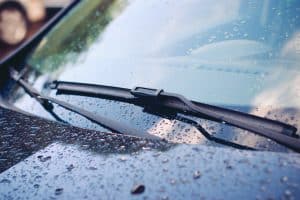We’ve all been there—driving down the road when a rock or piece of debris suddenly flies up and leaves a mark on your windshield. At first, it seems like no big deal. But whether it’s a small chip or a long crack, damage to your windshield can impact your safety and your wallet. The key is knowing what type of damage you’re dealing with so that you can take action before it worsens.
What is a Windshield Chip?
A chip is a small, localized impact on your windshield that doesn’t cause a full fracture. Chips are typically caused by debris, like rocks or gravel, hitting the glass at high speed. They often appear as small, round or star-shaped marks on the surface of the glass.
Why chips matter:
While a chip may not seem like much initially, it’s essential to address it early. A small chip can grow into a crack due to factors like temperature changes, humidity, or the pressure of everyday driving. The sooner you repair a chip, the better the chance the damage can be contained, saving you from costly windshield replacements.
Types of Chips
- Bullseye Chip: The most common type of chip, with a circular, darkened spot in the center surrounded by rings.
- Star Chip: A chip that radiates cracks outward in a star-like pattern.
- Combo Chip: A combination of a bullseye and star chip, often requiring more intricate repairs.
What is a Windshield Crack?
A crack is a line or break in the windshield that extends beyond the initial impact area. Cracks are usually longer than chips, ranging from a few inches to a full windshield replacement. Cracks are caused by similar factors—like flying debris or extreme temperature shifts—but they’re more dangerous because they compromise the windshield’s structural integrity.
Why cracks matter:
Unlike chips, cracks can’t be easily repaired in most cases. Once a crack has formed, it’s more likely to spread under pressure or during extreme weather conditions. A crack that starts small can grow quickly, reducing your visibility and safety on the road. Additionally, cracks that reach the windshield’s edges can make the entire piece vulnerable, leading to a more expensive replacement.
Types of Cracks
- Stress Crack: These cracks are caused by pressure or temperature changes, often appearing as long, straight lines.
- Edge Crack: These cracks typically start at the edge of the windshield and can spread inward if not dealt with quickly.
- Long Crack: A crack extending several inches often requires windshield replacement.
How Windshield Damage Affects Safety
While chips and cracks may not always seem urgent, both pose serious risks to your safety. A compromised windshield can reduce the strength of your vehicle’s roof in a rollover accident. The windshield also plays a critical role in the deployment of your airbags. If the windshield can’t handle the force, the airbags may not deploy as intended, increasing the risk of injury.
Vision Hazards
Even small chips or cracks can impair your vision, especially in certain lighting conditions. Glare from the sun or headlights can cause you to miss important road signs or hazards. A damaged windshield can also distort your view of the road, making driving at night or in rainy conditions more dangerous.
Risk of Spreading
Windshield damage often worsens over time. Temperature fluctuations—like when you park your car in the sun or freezing weather—cause the glass to expand and contract, putting pressure on the cracks and chips. The more the damage spreads, the more expensive and complicated it becomes to repair.
When Should You Repair or Replace Your Windshield?
If you spot a chip or crack in your windshield, addressing it as soon as possible is important. Here are a few guidelines:
- Chips smaller than a quarter can often be repaired.
- Cracks smaller than 6 inches might be repairable.
- Cracks in the driver’s line of sight should always be repaired or replaced immediately.
- Edge cracks or long cracks may require a full windshield replacement.
Conclusion
Whether a small chip or a long crack, windshield damage shouldn’t be ignored; both types can grow and affect your safety. Early intervention can prevent further damage, restore your visibility, and help maintain your vehicle’s structural integrity.
If you’re unsure whether your windshield needs repair or replacement, contact a professional for an assessment. Don’t wait—addressing damage early can save you time, money, and headaches in the long run.




